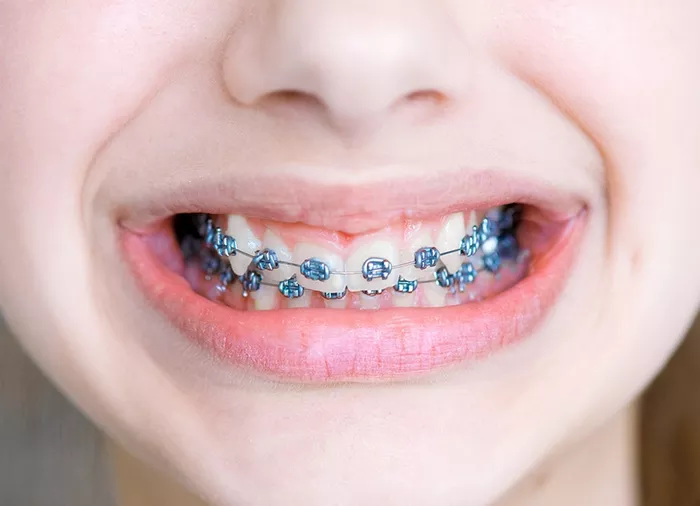Orthodontic braces have evolved significantly over the years. Among the most critical components of any braces system is the wire, which guides the teeth into proper alignment. While stainless steel wires are the traditional choice, titanium wires are increasingly being used due to their unique physical and mechanical properties. This article explores how titanium wires operate differently from regular braces wires and how they affect the overall orthodontic treatment experience.
Understanding the Composition: Titanium vs. Stainless Steel
The primary difference between titanium wires and regular wires in braces lies in their material composition. Regular braces wires are typically made from stainless steel, a strong and rigid alloy of iron, chromium, and sometimes nickel. Titanium wires, on the other hand, are composed of titanium or a titanium alloy such as nickel-titanium (NiTi).
Titanium alloys offer superior biocompatibility, flexibility, and resistance to corrosion. These properties make them ideal for patients with metal sensitivities or allergies. Moreover, titanium’s natural oxide layer provides additional protection and ensures durability throughout the orthodontic treatment.
Mechanical Properties That Influence Tooth Movement
The mechanical behavior of orthodontic wires determines how effectively they move teeth over time. Titanium wires differ in several ways:
Flexibility: Titanium wires, especially NiTi wires, are highly flexible. This allows them to deliver consistent, light force over a longer duration, reducing discomfort for the patient.
Superelasticity: One of the key properties of NiTi wires is their superelasticity. They can return to their original shape even after significant deformation, which helps maintain steady pressure on teeth.
Shape Memory: NiTi wires have a shape memory effect. They remember their original configuration and exert forces to return to that shape, aiding in precise tooth movement.
Stiffness: Stainless steel wires are stiffer and exert stronger forces on the teeth. While this can be beneficial in certain stages of treatment, it often results in greater discomfort initially.
Thermal Activation and Titanium Wires
Some titanium orthodontic wires are thermally activated. These wires respond to body temperature and become more active in the mouth. At room temperature, they are soft and pliable, making them easier for orthodontists to place. Once inside the mouth, the wires become more rigid and start exerting force on the teeth. This controlled force application is particularly beneficial during the initial alignment phase of treatment.
Patient Comfort and Titanium Braces Wires
Titanium wires offer a more comfortable orthodontic experience for patients. The consistent low force they apply is less likely to cause inflammation or pain compared to the abrupt force of stainless steel wires. Additionally, because these wires require fewer adjustments, patients may enjoy longer intervals between appointments, reducing inconvenience and increasing overall satisfaction.
Application Across Treatment Phases
Orthodontic treatment is typically divided into several phases: initial alignment, space closure, and finishing. Titanium wires are especially useful during the initial and intermediate phases due to their flexibility and adaptability.
Initial Alignment: The flexibility of titanium wires makes them ideal for beginning treatment when teeth are most misaligned. They can gently bring teeth into a more uniform configuration.
Space Closure: As treatment progresses, stiffer wires like stainless steel may be used to close spaces or make more precise adjustments.
Finishing: During the final stages, a combination of titanium and stainless steel wires may be employed to perfect the bite and alignment.
Biocompatibility and Hypoallergenic Qualities
Titanium is renowned for its excellent biocompatibility. Unlike stainless steel, which contains nickel—a common allergen—titanium wires can be suitable for patients with nickel sensitivities. In some cases, even NiTi wires have less reactive forms of nickel that are encased within the titanium structure, further reducing allergic responses.
This makes titanium wires an excellent choice for patients who have experienced irritation or allergic reactions from traditional braces. By using biocompatible materials, orthodontists can ensure a more comfortable and safer treatment process.
Corrosion Resistance in Oral Environments
The human mouth presents a challenging environment for any foreign object due to the presence of moisture, enzymes, and fluctuating pH levels. Titanium naturally resists corrosion better than stainless steel. Its oxide layer protects it from rust and degradation, thereby extending the life of the wire and maintaining its performance throughout treatment.
Cost Differences and Value Considerations
It’s important to consider the Braces Cost when evaluating different wire types. Titanium wires are generally more expensive than stainless steel wires due to the complexity of their manufacturing process and superior material properties. However, this cost can be offset by the reduced need for frequent adjustments, increased patient comfort, and lower risk of allergic reactions or complications.
In high-quality orthodontic practices, the value of titanium wires lies in their ability to provide efficient treatment with fewer side effects, potentially shortening overall treatment time and reducing the number of clinic visits.
Integration with Different Braces Types
Titanium wires can be integrated with various Braces Types, including ceramic braces, self-ligating braces, and lingual braces. Their flexibility and low force profile make them ideal for esthetic systems that prioritize appearance and comfort. Additionally, their use in self-ligating brackets, which reduce friction and allow freer tooth movement, can optimize treatment efficiency.
Summary
Ultimately, the choice between titanium and regular stainless steel wires depends on several factors including patient sensitivity, treatment goals, and orthodontist preference. Titanium wires, with their superelasticity, shape memory, biocompatibility, and durability, offer numerous advantages that make them ideal for a wide range of orthodontic cases.
Consulting with a qualified orthodontist will help determine which wire type aligns best with your treatment needs. Whether you’re prioritizing comfort, efficiency, or reduced clinic visits, titanium wires represent a modern advancement in orthodontic care that offers real benefits for patients of all ages.
Related topics

